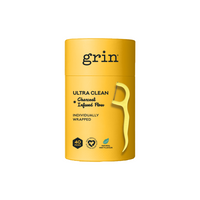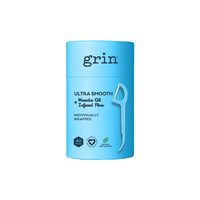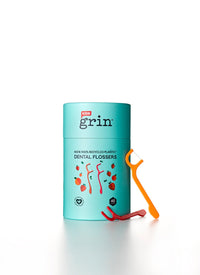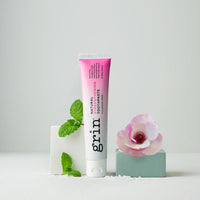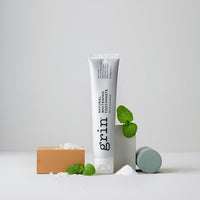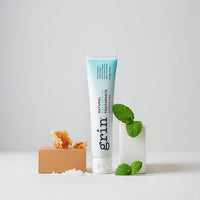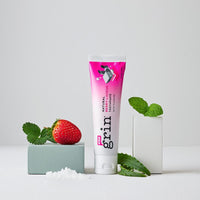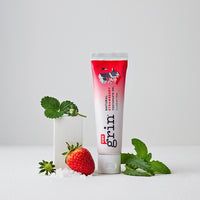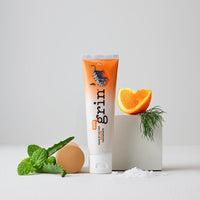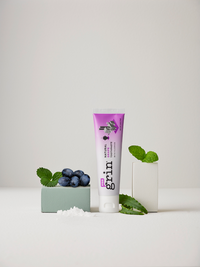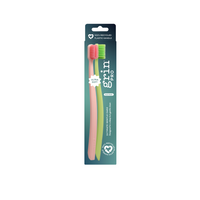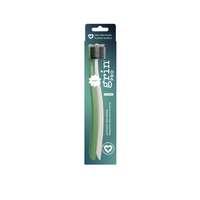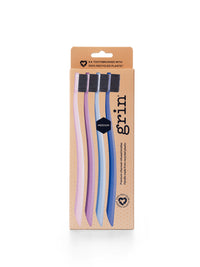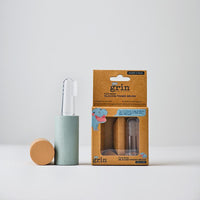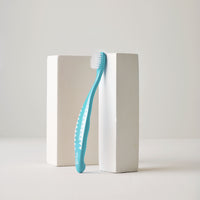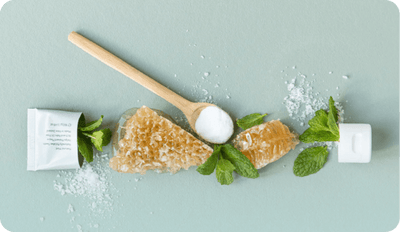FAQs

What makes Grin different from other natural toothpastes on the market?
Our toothpaste has a couple points of difference; it’s 100% New Zealand made and we source New Zealand ingredients where possible, all Grin toothpastes contain three key active ingredients to care for your whole mouth and Grin is the only natural toothpaste that you can find in dental clinics nationwide.
What will I notice when I change from mainstream toothpaste to Grin?
Most mainstream toothpastes rely on artificial sweeteners and flavours to create the overly sweet and minty taste that people have become accustomed to. Grin uses the natural sweetness of peppermint and fennel to provide a gentle flavour that doesn’t compromise on freshness. When you try it for the first time you might find it a bit different, however if you continue using Grin for a week you, your taste buds will adjust and fall in love with Grin!
Is it safe for kids to swallow Grin toothpaste?
All our toothpastes are natural and are free from harmful ingredients. Our fluoride free kid's options 'Strawberry' and 'Orange' are safe if swallowed by your little brusher. Our with fluoride 'Berry-licious' option, kid's should avoid swallowing and spit out excess toothpaste after brushing.
I'm pregnant, is it harmful for me to ingest Grin toothpaste while brushing my teeth?
Not at all! Grin toothpaste is completely safe for pregnant women to use as it is made from of natural and safe ingredients.
Is Grin suitable for people who suffer from a dry mouth?
Together with its key ingredients, Grin natural toothpaste also contains the amino acid betaine. Studies suggest that the use of a detergent-free, betaine-containing toothpaste (such as Grin) may provide relief from the symptoms of dry mouth.
Why does Grin not contain any SLS?
SLS (Sodium Lauryl Sulfate) is a common component of standard toothpastes. This chemical compound does not actually clean teeth—its sole purpose is to produce foam, which gives the impression of cleaning. SLS is commonly be found in other foaming products, such as car wash detergents, toilet cleaning detergents, and shower gels. For some people exposure to SLS causes canker sores and mouth ulcers.
Is Grin toothpaste gluten free?
All Grin toothpastes are gluten free (as tested by an independent laboratory). Our products do contain 'Potassium Olivoyl Hydrolyzed Wheat Protein' however laboratory testing shows that gluten is undetected in all Grin toothpastes. Please email info@grinnatural.co.nz if you wish to obtain a copy of the testing certificate.
Does Grin toothpaste contain microbeads?
Grin toothpastes do not contain microbeads.
Do Grin toothpastes contain any GMO ingredients?
There are no GMO ingredients in Grin toothpastes.
Does Grin test on animals?
Our products are not tested on animals. Our kids toothpastes are vegan friendly, whilst our Cool Mint and Whitening toothpastes are suitable for vegetarians as they contain Propolis. Propolis is a sticky substance that bees make from saliva, beeswax and tree sap to block up unwanted spaces in the hive. Our Propolis is gathered in a sustainable way without harm to bees.
Are Grin products recyclable?
Grin’s tube material is produced by a packaging supplier that is certified in eco-friendly production. Our tubes can be recycled through our recycling program.
Our toothbrush handles are made from either 100% biodegradable bamboo which can go in your home compost or from non-GMO corn starch, which can be processed through commercial composting - which we will process through our recycling program. The bristles can be recycled through our recycling program also.
Find out about our recycling program here.
Why does Grin have a coloured stripe on the bottom of the toothpaste tube?
Toothpastes have four different stripe colours. The coloured squares on the bottom of toothpaste tubes have nothing to do with the product’s content. They are instead an artifact of manufacturing process, and are known as colour marks, printed marks or eye marks. During the manufacture and packaging process these stripes allow high-speed machinery to recognise where the packaging needs to be folded or cut.


